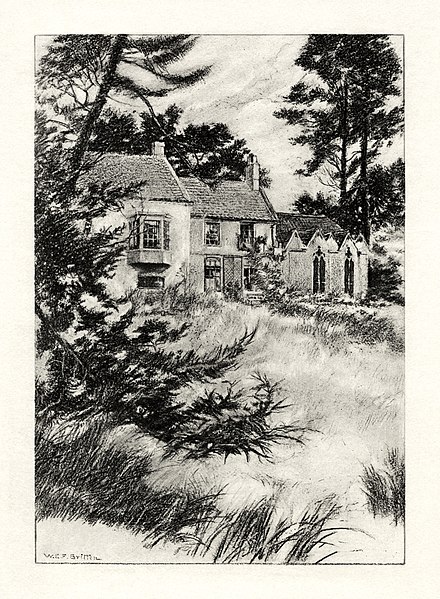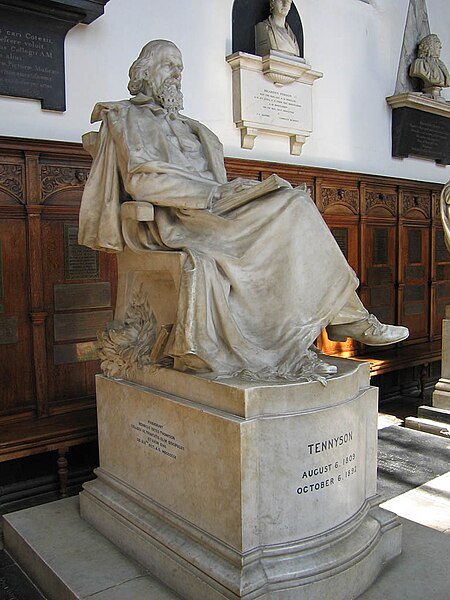The poem In Memoriam A.H.H. (1850) by Alfred, Lord Tennyson, is an elegy for his Cambridge friend Arthur Henry Hallam, who died of cerebral haemorrhage at the age of twenty-two years, in Vienna in 1833. As a sustained exercise in tetrametric lyrical verse, Tennyson's poetical reflections extend beyond the meaning of the death of Hallam, thus, In Memoriam also explores the random cruelty of Nature seen from the conflicting perspectives of materialist science and declining Christian faith in the Victorian era (1837–1901), the poem thus is an elegy, a requiem, and a dirge for a friend, a time, and a place.
The poet Arthur Henry Hallam (1811–1833), whom Tennyson mourned with the poem In Memoriam A.H.H. (1850). (Bust by Francis Leggatt Chantrey)
Alfred, Lord Tennyson, photographed in 1857.
Alfred Tennyson, 1st Baron Tennyson,, was an English poet. He was the Poet Laureate during much of Queen Victoria's reign. In 1829, Tennyson was awarded the Chancellor's Gold Medal at Cambridge for one of his first pieces, "Timbuktu". He published his first solo collection of poems, Poems, Chiefly Lyrical, in 1830. "Claribel" and "Mariana", which remain some of Tennyson's most celebrated poems, were included in this volume. Although described by some critics as overly sentimental, his verse soon proved popular and brought Tennyson to the attention of well-known writers of the day, including Samuel Taylor Coleridge. Tennyson's early poetry, with its medievalism and powerful visual imagery, was a major influence on the Pre-Raphaelite Brotherhood.
Carbon print by Elliott & Fry, late 1860s
An illustration by W. E. F. Britten showing Somersby Rectory, where Tennyson was raised and began writing
Statue of Lord Tennyson in the chapel of Trinity College, Cambridge
John William Waterhouse's The Lady of Shalott, 1888 (Tate Britain, London)






